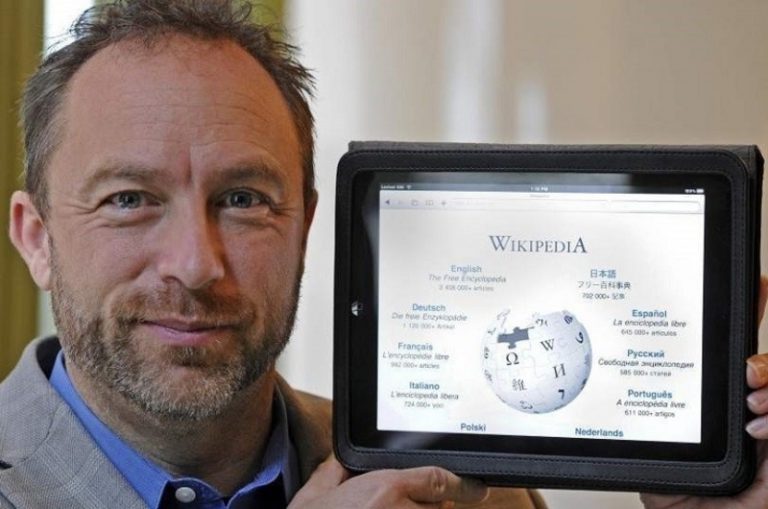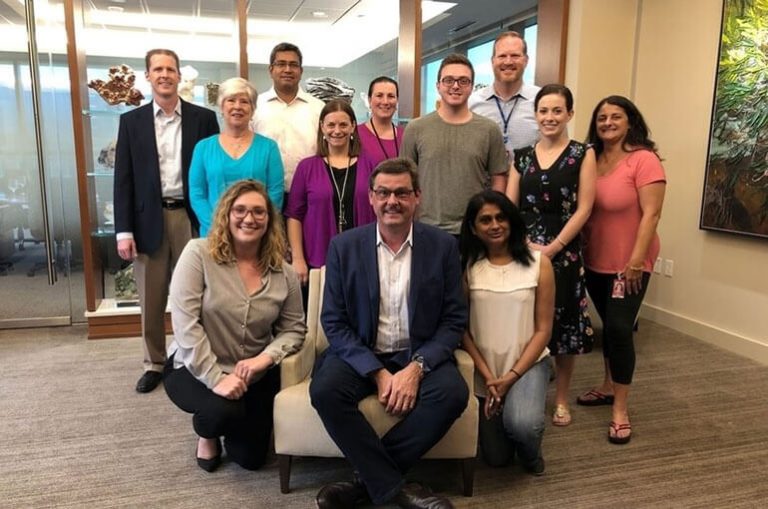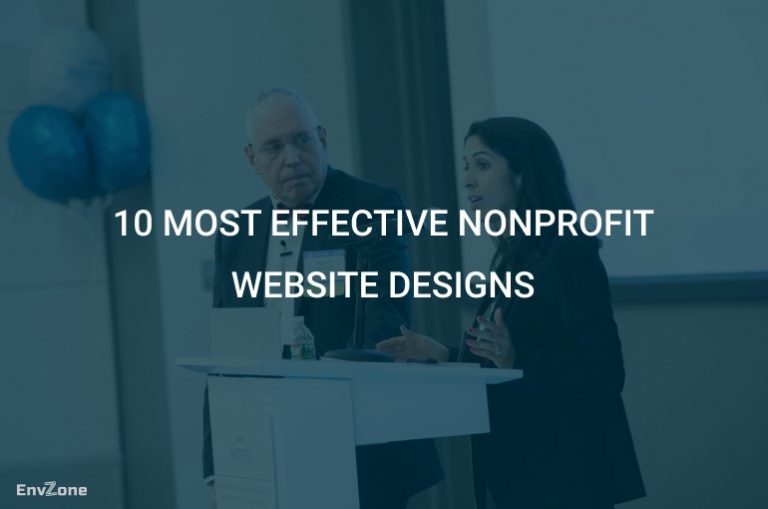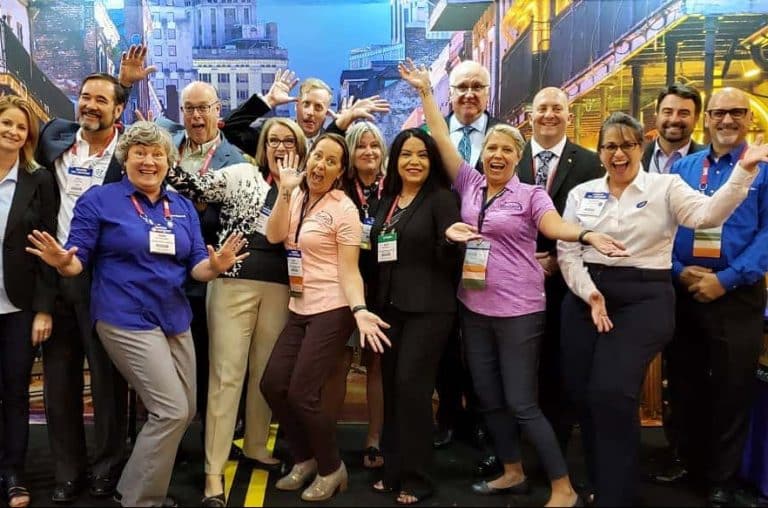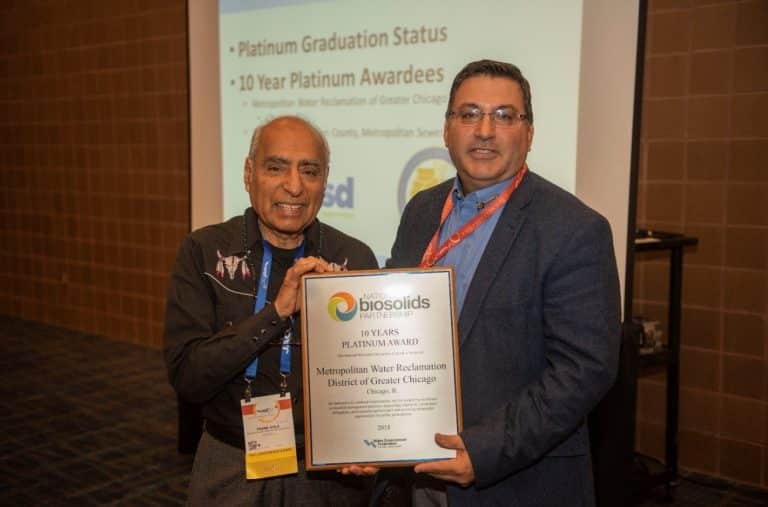TED: From a Dinner Party to the Most Admired Non-profit Business
TED started 36 years ago with low-budget series of talks that last for 18 minutes. In the last ten years, this non-profit organization has grown into a $65 million business. All around the world, people could watch TED talks even online. It is a place for little-known speakers to have more chances to become industry leaders. Thus, gradually TED stage has been an allure to talented speakers who want to share their fresh ideas and creative thinking.
The Story of Non-profit Organization TED
How TED was founded
The one who launched TED in 1984 was Richard Saul Wurman, who is also a designer and architect. At first, his purpose was to create a dinner party that he always wished to have but could not. The father of TED is a fan of cheeky acronyms, the fact is TED stands for technology, entertainment, and design and his dinner party should center on these topics.
The first TED conference, which was organized by Wurman and his assistant, consisted of 300 people, who were Wurman’s closest friends and colleagues. It has been said that if someone was botching a line or completely losing their way during the talk, Wurman usually sitting onstage for every talk would leave his chair and come closer, stay behind the speaker and quietly say: “Time to wrap things up”.
Although TED’s unveiling of the world’s first compact disc was pretty a great feat at that time, Wurman did not release his second conference until 1990. And time passed, the TED event became more attractive, which drew the attention of bigger names and bigger audiences. Wurman recalled that “there was a time when Steve Jobs called me up at home and say, ‘what stuff do you want at the conference this year as far as equipment?’”
However, in 2000, Wurman sold this enterprise to Future PLC, a publishing company. Later, Chris Anderson, a British-American entrepreneur, purchased TED in 2001 for $6 million. And the company has stayed under Anderson’s control since then.
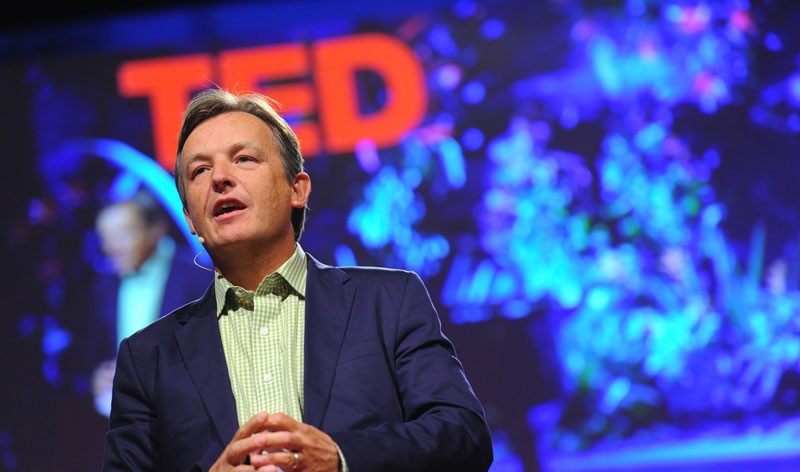
With the guidance of talented businessman, Anderson, TED has grown and become a genuine kingmaker.
TED has indeed become a dream stage for any speakers to show off their ideas and bring their products further. For example, the expert and author Simon Sinek shared that his career has been boosted faster thanks to TED. His talk in 2009 naming “How Great Leaders Inspire Action” aimed to promote his first book “Start with Why”, and amazingly, this book has reached nearly a million copies and still on a rise since the talk was uploaded on the TED site. And, that video “How Great Leaders Inspire Action” has ranked number three among the top most-view TED videos of all time with 34 million views.
Sinek shared on an interview with Business Insider that his career was catalyzed thanks to TED, yet the anxious feeling is inevitable if you stand on the TED stage. People truly believe that TED talk can change or destroy their careers. Even famous people still find it hard to escape those pressure. The author and journalist Malcolm Gladwell had his first TED talk in 2004 and his topic was the mystery of creating the perfect spaghetti sauce. And when he recalled the event, he said: “I was nervous, and to be honest, I didn’t like that talk since I did it halfway through. If you watch it, you probably will see it. To me, it’s painfully obvious.”
Struggles of TED
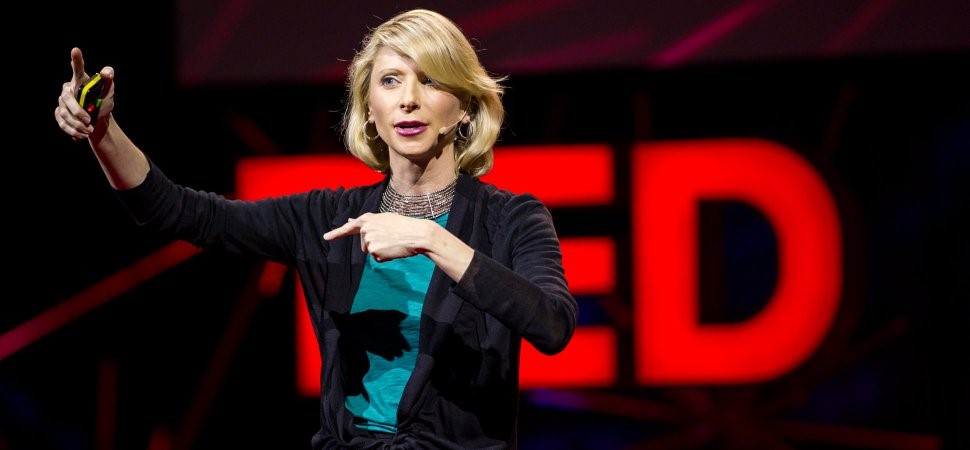
Wrong ideas at the right place
TED-driven fame does not always result in good outcomes for the speakers as well as the listeners.
In 2012, Amy Cuddy, a Harvard psychologist, gave a talk called “Your Body Language Shapes Who You Are”. It was based on a study in 2019, that she believed standing in a posture like Wonder Women would help boost testosterone, make the person look more powerful, and thus help them feel or behave more assertively.
Her video became an inspiration and reached over 18 million views. And “power posing” became a life hack for millions with the hope of changing their life. Then it turns out that there were some flaws highlighted by other psychologists according to Susan Dominus reporting to the New York Times Magazine.
TED stage made it easier for Cuddy to spread her flawed information and even helped her gain more attention. In the end, Cuddy had to leave her tenure-track job at Harvard, and her TED talk is still there on YouTube.
The bigger it is, the more troubles it got
Anderson’s ambition was huge. By 2006, he had wanted to broaden TED’s scope so that several leaders from other areas like religion, art, life coaching, poet and other talented minds would be able to join with the previous famous speakers like Jane Goodall and Stewart Brand. And true to what he expected, TED is currently a household name in almost any field. One of the most popular talks by Sir Ken Robinson called “Do Schools Kill Creativity” has been viewed more than 65 million times.
But when the business’s grown bigger, it seemed to struggle with maintaining oversight at its conferences and offices. The Washington Post reported that numerous attendees of the 2017 TED Conference confessed that they had been sexually harassed or groped.
Casting a broader net has also invited the critics who are not pleased with how TED has become. In 2003, Benjamin H. Bratton, a visual art professor at the University of California at San Diego, talked on TEDx about the bad sides of TED, he believes that TED doesn’t truly an inspiration for people to think, feel, or act differently. Additionally, he called the show “middlebrow megachurch infotainment” and assumed that TED is nothing different from “dumbing down the future”.
Sinek did not agree with the opinions of the critics to TED. He supposed that one of the reasons why TED still exists and thrives is because it focuses on simplifying complex subjects. If the ideas are so complicated that no one could understand, there would be no value to the general population. But if we can learn how to communicate our ideas, help them to understand and practice, then it will generate positive outcomes. Sinek also added: “Many academics hate TED because they’re the ones who didn’t get TED famous.”
Moreover, some people dislike TED since they assume that TED is hypocritical. They believe TED’s purpose is to spread the ideas, yet the cheapest ticket to a conference lays at least $5,000 and so only those wealthy enough will be able to hear those fresh ideas. Then Anderson defended TED that the high-ticket cost is because TED also makes the videos available online for free, each year TED spends tens of millions of dollars on a website. Thus, it needs money from people who are willing to spend and then use it for distributing the talks to the world.
How TED Becomes So Successful
Above is some information about how TED was founded and what struggles it has been through. However, no matter what obstacles it could face, TED found its way to be different and outstanding among its competitors.
Respect your heritage
When Anderson purchased TED, he could have replaced the conference’s name. Initially, the name TED stands for “Technology, Entertainment and Design”, which makes sense with its origin in Silicon Valley. Moreover, the name also illustrated the convergence among these three industries.
On the other hand, as TED grew bigger, it has expanded beyond these three areas and included other concerning topics like scientific, cultural or academic topics. Besides, with the name TED, some people might get confused if the conference was owned and run by a Mr. Ted.
There were on-going arguments about if the conference should be renamed. Yet in the end, Anderson maintained the name. To him, the name has reminded people of TED’s history, evolution since the day it was created. Additionally, Anderson added the slogan “Ideas worth spreading” to the logo. Simply with three words, he could make it transparent what TED is all about.
Anderson’s story with TED has taught that it is good to respect the origin. Then communicating effectively requires not only respect but also it needs creativity to draw people’s attention, and simplification to deliver the message clearly and accurately.
Appearances matter
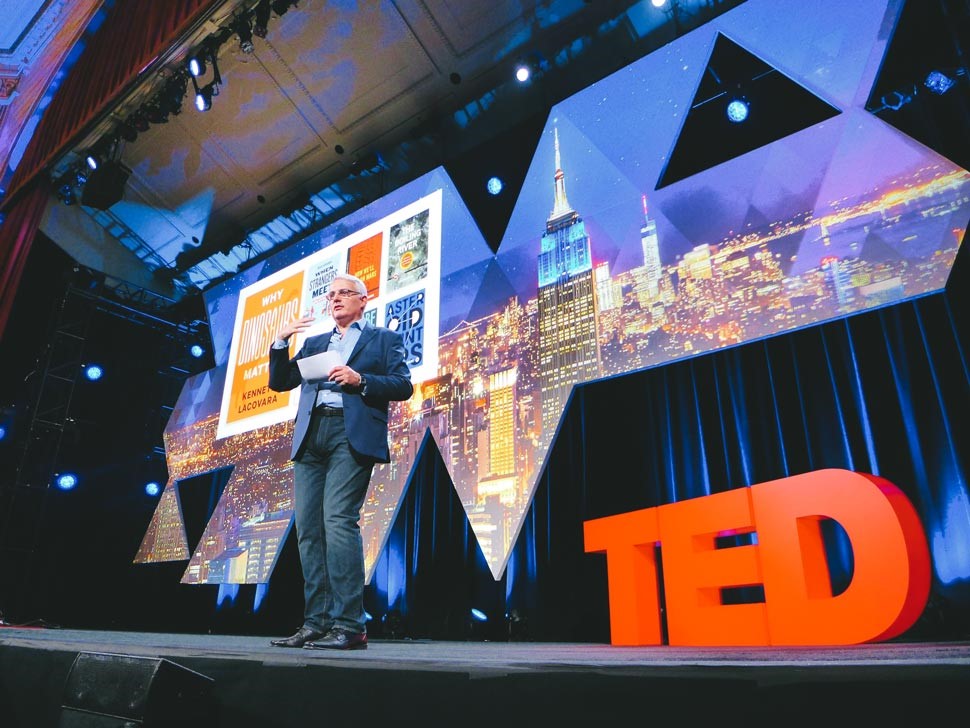
If you are a common visitor to the TED.com website or even follow its evolution for some time, you can realize that the TED teams are putting lots of effort into making the design and functionality look and operate better. The New York Times commented on the organization in 2014 that TED’s website is innovating every day, it adds new features such as chic white space, footnotes, links, discussion boards, updates to help the speakers, as well as the listeners, get the best experience.
One of the success factors of any business is attention to detail and TED is a clear example of this. The focus on detail has been the reason for the incredible growth of the web channel. Besides, TED also spent much time curating its content to make sure that it will be presented in the best way. Furthermore, to have the best quality video, TED invested in technology as well. The videos are shot using several camera angles, Hollywood-quality lightning, meaningful close-ups, and crisp sound. Understandably, the online audience can easily get distracted, thus the content should be presented with the world-class standard to catch the attention.
In addition, the speakers’ content is also checked carefully before any speeches. However excellent a speaker might be, TED will certainly spend much time to make sure that the content is well-delivered. Sometimes, they can even spend months with speakers to prepare for the talk.
Do not spend too much on marketing
Marketing can indeed help support a company’s growth, yet heavily relying on it will almost lead to failure. The fact is there are several large corporations out there, if they want to invest in advertising, there is no such a big deal for them. And competing with them is hard since they are already prepared with previous marketing experiences and large amounts of budget.
In TED’s case, they showed the world that they were able to achieve phenomenal growth with limited marketing spending. In an interview in 2012, Anderson share that: “It’s not a big giant marketing budget or anything like that makes it grow. It is more about word-of-month. We could get bigger thanks to online word-of-mouth, largely email referrals, sharing on social media. That’s such a good sign since people in the world are showing their curiosity to learn new things and pass them on their friends and family.”
Accordingly, spending time to create excellent content or products that could spread through word-of-mouth and social media would generate better and more effective outcomes compared to investing huge money in marketing. Then this creating out-standing content to let people watch and share is not always easy, it requires the team with the right personality, skill set, as well as the time to research, think and experiment. In the end, this work will pay higher dividends than over-funded advertisements.
Create something truly extraordinary for your customers
TED has been so powerful that being featured in a TED talk can transform someone’s life. One example could be Hans Rosling, a Swedish professor of international health, whose life has changed to another promising chapter thanks to TED. Yet at first, this guy turned down the invitation to speak at TED since he believed their approach was frivolous. And then he agreed and gave a speech. During the talk, he discussed the relationship between religions and numbers of babies using a data visualization software his son had coded before. His talk was called “Religions and Babies”, which has become one of the most popular TED talks of all time.
The talk was so successful that made him decide to give a further eight TED talks. He said that his TED talks have taken more “hours of attention” than his entire preceding life’s work. After the speeches, he also gave up teaching and started to work full-time on his non-profit, non-advocacy Gapminder Foundation. TED not only changed Rosling’s life but also his son. After Larry Page watched Rosling’s TED talk, Google purchased the software that was used during the talk and ended up hiring Rosling’s son.
The impact of TED is huge, it turns a normal citizen into the best-selling authors, and completely transform a person’s life. Thus, through times, it has been a dream to some to be able to stand there and give a speech.
Create your own category
Conferences are considered as a competitive business since the number of conferences is increasing every year. However, TED was able to create something unique that defined its value and differentiate itself from other competitors.
To fund the videos and spread ideas to more people, TED needs to make money in different ways. They could be attendance fees, sponsorships, foundation support, licensing fees and book sales, additionally partnerships, as well as ads on videos. In terms of variety, this TED brand has several smaller sub-brands like TED talks, TED Conferences, TED Global, TEDx, TED-Active, TED Prize, TED Fellowships, TED-Ed, etc. This diversity in brands offers a chance for more people to be able to get access to the information.
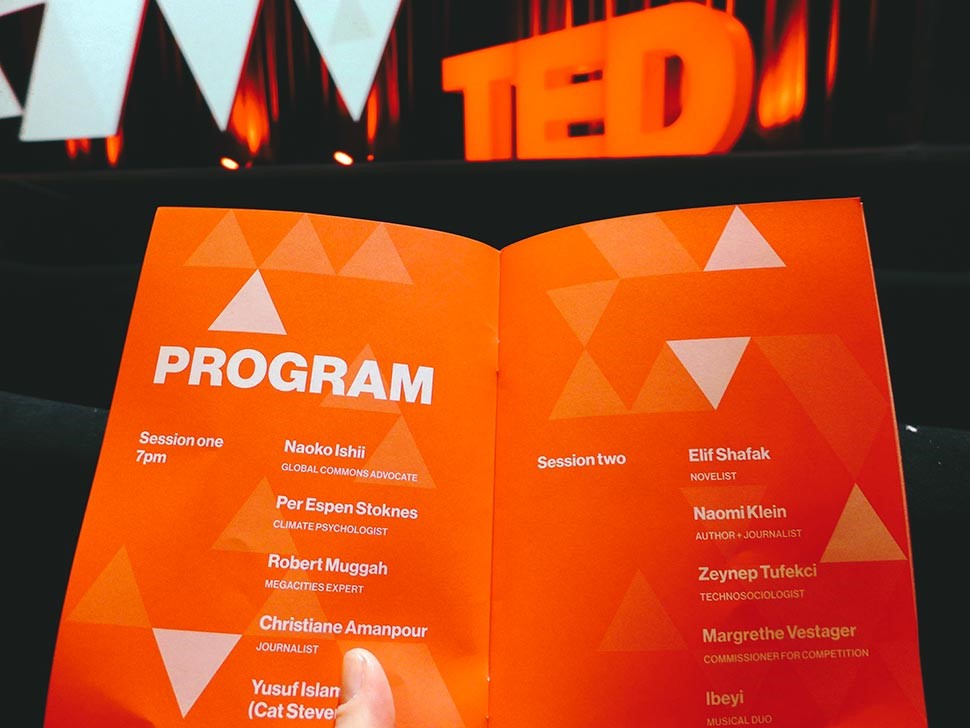
TED has gradually grown bigger and more popular, even it has been described by different names like “the Oscars of public speaking”, the “gathering of the global ideas masters” or “a high-powered schmoozefest”. Even in the entertainment area, people also appreciate the name TED, for instance, in the Muppets movie, the character Scooter has been updated to become a Google employee and TED attendee.
TED also has to compete with other rivals in the industry. Several well-known conferences that have the potential to be TED’s competitors are PopTech, FOO Camp, and Solve for X. Apart from these, there is also a long list of other conferences that are less heard of like the Feast, Do Lectures, the 99% Conference, the Mountain Summit and Techonomy. Yet the mentioned organizations show little chance in defeating TED since TED is a combination of excellent events with high-profile speakers, available online for free, game-changing effects for speakers. And the listeners will not alternatively go to another place if TED continues to offer these interesting and informative discussions.
In conclusion, TED has proven to be such a successful non-profit business under the control of Chris Anderson. By applying different tips, Anderson together with his teams has been able to spread the ideas to different parts of the world. And through this article, I hope you as entrepreneurs would be able to find out the ways like TED organization did to help your business grow faster and even bigger.


